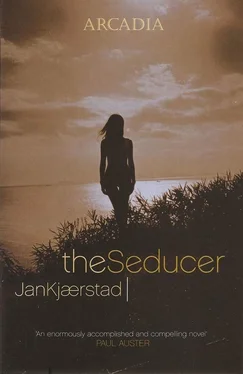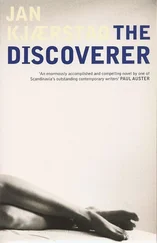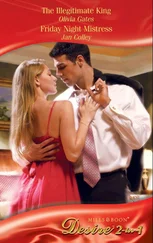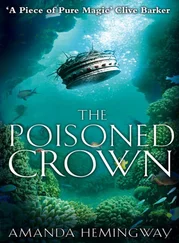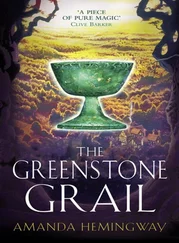The next morning they stepped out into the most beautiful weather. Everything, the whole, wide world, was shimmering blue and white — sparkling white — and charged with a breathtaking silence. The television mast a hundred metres above their heads glinted like one of Carl Nesjar’s year-round fountains, a sculpture of ice. Jonas was sure that Le Corbusier would have appreciated this sight, that Le Corbusier, like Jonas, would have been filled with awe at the thought of such a heroic project: a wild, elongated and sparsely populated country linked together by a telecommunications network. An epic undertaking, Jonas thought. And beautiful, Jonas thought, as beautiful as nature itself.
It was said that you could see a seventh part of Southern Norway from the top, and it certainly seemed so. As Jonas spun round and round on his own axis, like a little kid, wide-eyed and speechless, he discovered — and this he automatically put down to the events of the previous night — that suddenly this landscape meant a great deal to him, he actually felt a kind of love for these vast open spaces, these mountains. And the snow, even the snow. He bent down and scooped it up, having to screw up his eyes against the light, and as he crouched there, hunkered down on Gaustatoppen, clutching a handful of snow, it dawned on him why so many people migrated to the mountains at Easter time: on account of the light, the dazzling light. And from that day forth, Jonas Wergeland was always to regard this as being his countrymen’s finest trait: their longing for light which, not unreasonably, manifested itself at Easter time, during a religious festival; and in days to come this insight was to form the basis for his optimistic estimation of television’s potential, inasmuch as television was a form of light, dazzling light.
The trip down was something of an anticlimax. Even though he took the slopes diagonally, crisscrossing his way down, it went so fast that his eyes were tearing behind his sunglasses; his leg muscles ached and he fell God knows how many times, slithering and bouncing. Sigrid A. was way ahead of him, executing elegant practised Telemark swings as though she were taking part in a display and only lacked the felt hat, the homespun breeches and the traditional sweater. When he finally caught up with her at the foot of Longefonn she was standing talking to the rescue team that had been about to institute a search for them.
And remember, promise me you will remember, in the midst of all this, how Jonas Wergeland dwelt on the Norwegian landscape in his programme on Knut Hamsun, a programme which also provided him with a golden opportunity for shots of the country’s natural wonders, although a lot of people were surprised at the way in which he did this. Jonas was never in any doubt as to what constituted Knut Hamsun’s key story, the one story which in its own special way shed a revealing light on his life: his meeting with Adolf Hitler. Because Hamsun would never have met Hitler had he not been a great writer. Nor would he have met him had he not sympathized with the Nazis. His meeting with Hitler was an extreme situation which highlighted most clearly the extremes of Hamsun’s own character, the breadth of this most vexatious of all Norwegian authors.
Jonas Wergeland focussed, therefore, on the writer during his last and possibly his most amazing journey to foreign parts, into the heart of darkness, so to speak. Hamsun was eighty-three years old — that in itself is astonishing — and had been attending the German minister of propaganda’s press congress in Vienna. Hamsun had then been invited to meet with Adolf Hitler and duly found himself at Berghof, the Führer’s renowned headquarters in Obersalzberg near Berchtesgaden in Austria. It was Saturday June 26th 1943, the time 2.00 p.m.. The two shook hands, author and dictator, and Wergeland showed this handshake in slow motion, over and over again, the close-up of their hands, as if to emphasize the irrefutability, the irrevocability of this event which shocked so many Norwegians to the roots of their being.
Jonas cheated a little with the setting. There were eight people in the drawing-room at Berghof, but he showed only three: the two protagonists plus assistant secretary Holmbo, who had acted as interpreter, and to save having to reconstruct that remarkable room with all its paintings and tapestries, its oak beams and heavy furniture, he seated the three of them with their teacups right up against the ten metre long panorama window in the gable end, overlooking the valley, and he replaced the view from this window, which should in fact have shown Unterberg and Berchtesgaden, with a glimpse of Salzburg in the distance, with long, almost dreamlike panning shots of the Norwegian landscape, an effect achieved by allowing the camera to almost drift off through the window occasionally, while Hamsun and Hitler were conversing, to present shots of the scenery of north Norway, from Kjerringøy with its beautifully preserved trading post, Kråkmotinden, snub-nosed and majestic — it was at the foot of this mountain that Hamsun had written The Fruits of the Soil , spellbinding, sweeping shots of Lofotveggen, and from Hamarøy, of Hamarøyskaftet in particular, rearing high into the air like a brazen old codpiece, as refractory as Hamsun himself. These sequences were run to the accompaniment of readings from Pan , descriptions of nature, and even though Jonas was well aware of the high cliché factor in this, he could not stop himself, the temptation was simply too great. This was also the only occasion in the Thinking Big series when he consciously set out to woo the public. And it did not fail, could not fail, what with the almost unbelievable landscape of northern Norway and Hamsun’s magical words from Pan . These passages went down particularly well abroad, quite taking the viewers’ breath away, they made the whole programme — in fact they paved the way for all the later programmes in the series. What saved these scenic interludes, however, from being run-of-the-mill, was the ‘impossible’ aspect, the fact that they were viewed from a balcony near Berchtesgaden in Austria. It was as if Jonas wished to hint at the connection between an extreme landscape and an extreme situation. Either that or the paradox of it: the contrast.
In order to underline this paradoxical aspect still further, Jonas did not reconstruct any of the extraordinary dialogue, forty-five minutes of it, during which Hamsun, instead of chatting about the art of writing, spoke out provocatively on such subjects as Norwegian shipping and the political future of Norway in general, in many ways an attack on Reich Commissar Terboven and an attempt to have him removed, while Hitler persisted in beating about the bush and evading the issues. In the programme all one heard in the background was a low murmur on two different levels: Hamsun’s high-pitched voice — he was all but deaf — and Hitler’s droning attempt to hog the conversation. Thus, in spite of everything, one was given the clear impression of a conflict: an old man, despairing and deeply moved, continually interrupting to insist on a point, and a dictator who was being contradicted and not getting his own way, growing more and more annoyed, raging inwardly — an outstanding scene in itself, worth dwelling on for that alone. According to Dr Dietrich, Hitler’s press secretary for twelve years, who was present in the room, only one man had ever gainsaid Hitler, the most powerful man in the world: the Norwegian writer Knut Hamsun.
Instead of reconstructing the conversation, Jonas accompanied this scene with voice-overs of what other writers had said about Knut Hamsun. So, while watching the Norwegian writer and the German leader, one of the most hated people in the world at that time, viewers heard various actors reciting what such diverse authors as Selma Lagerlöf, Johannes V. Jensen, Maxim Gorky, Boris Pasternak, H.G. Wells, Rebecca West, André Gide, Ernest Hemingway, Henry Miller, Isaac B. Singer, Stefan Zweig, Hermann Hesse and Thomas Mann had written or said about Knut Hamsun, each tribute more glowing than the one before, to the point where it became almost embarrassing, it being nigh on impossible for any Norwegian to imagine that one of their own could have meant so much to so many of the world’s great writers, nay, that he could have been one of most eminent literary figures of the twentieth century.
Читать дальше
